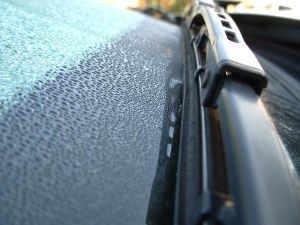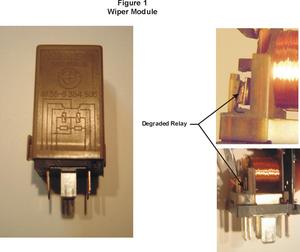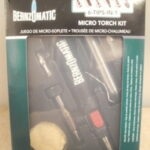My wipers had found the perfect time to stop operating. These were sequential type wipers and on their slowest setting they would swipe the windshield about every 15 seconds. And considering the type of wiper blades I was using, this was an excellent delay. I like the Triple Edge brand of wipers. They are manufactured using silicone rubber. They do a great job and there is an added bonus. Each time you use them, and each wipe they make across the glass, the wipers leave behind a micro-film of silicone. This amounts to a wax job on the glass that beads moisture away and you can get away with keeping the wipers at a slow delay almost all the time.
But now, the blades themselves had stopped moving altogether. This was annoying as the blades had stopped at like the one o’clock position. I stopped the truck and gave the blades a yank and they started moving again and this roadside repair lasted till I could get the beast back to the house.
Next day the rain had stopped and I wanted to try and get this latest repair taken care of before the rain came back. Turning on the ignition to the run position I clicked the wipers to continuous operation and then waited a couple minutes to see if they would hang up. And sure enough, they did. I popped the hood and found the wiring harness for the wiper motor and gave it a jiggle. The wipers promptly began moving again and I suspected that the harness plug had been a bit loose, and this may have fixed the problem.
A week later clearing the morning dew from the windshield, the wipers froze again. I went back under the hood and repeated the jiggle fix but to no avail this time. It now seemed that maybe I had not fixed anything after all.
There were a couple of ways I could fix this problem. I could replace the entire wiper motor or try and find the exact problem with the old motor..and fix that. A new motor is like eighty dollars so a fix it myself viewpoint seemed attractive. I investigated the wiring harness and sure enough I found that one wire of the harness seemed loose, and that by pulling that wire to just one side, the wiper motor would begin operating again. So now the question became..is the loose connection in the harness, or is it a loose pin on the motor connector ? And really, there is no good way to determine this.
Deciding to do what I could for it I got a soldering iron, several lengths of wire and some solder and began the process of clipping the wires, one by one from the harness, stripping the insulation from it’s end, and then soldering on an extra length of wire. Having done that I stripped the other end of this piece of wire and soldered that end to the appropriate connector, in the motor receptacle. The plan here was to completely remove and thus bypass the harness plug by wiring each wire directly to the pin in the plug receptacle mounted on the motor.
This didn’t take long and if it worked would save me a large chunk of money. But it did not work…the motor would still take spells of simply stopping until I went out and tapped it on the side with a wrench or yanked on the wires. Clearly, something else was causing the problem. Having eliminated the plug from this repair equation that left the motor itself. Looking at the motor I noticed it had a box shaped affair built onto it. There were three screws holding a lid onto this box and after removing these screws and the lid I had revealed a clip in circuit board. This must be the power on and sequential delay board. It made sense to me that somewhere on this board there would be a relay switch. The hand control inside the vehicle would tell the logic circuit on the board how often to turn on the wipers, and the relay would be the device which would be turned on by the controller and power up the wipers.
Having a back ground in electronics I was soon able to locate this relay. It was about the size of small bic lighter only more narrow. But it had no part number of it, and therefore no way to look up a cross reference for a replacement part. If this relay was bad and I had every reason to suspect it was, I was going to have to replace the entire motor to get a replacement.
So, eighty dollars later I held the new motor in my hand and was removing the three screws and the lid. Once open, I popped out the small circuit board and popped it into my old motor which was still mounted on the firewall. And turning on the wipers I watched with satisfaction as the wipers operated continuously for quite a long time.
I stored the motor away just in case the old motor gave up. I figure an easy fix was just as good as replacing the motor when all I needed was the circuit board.





